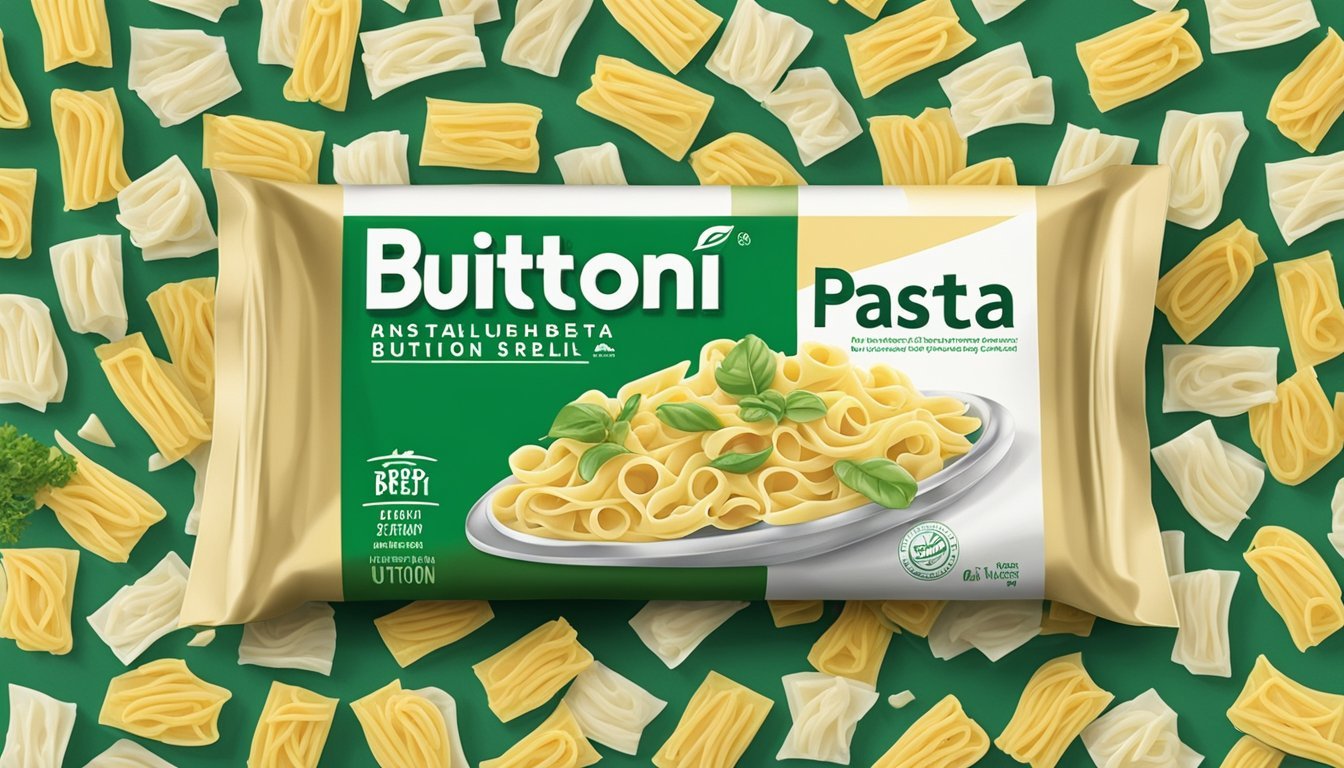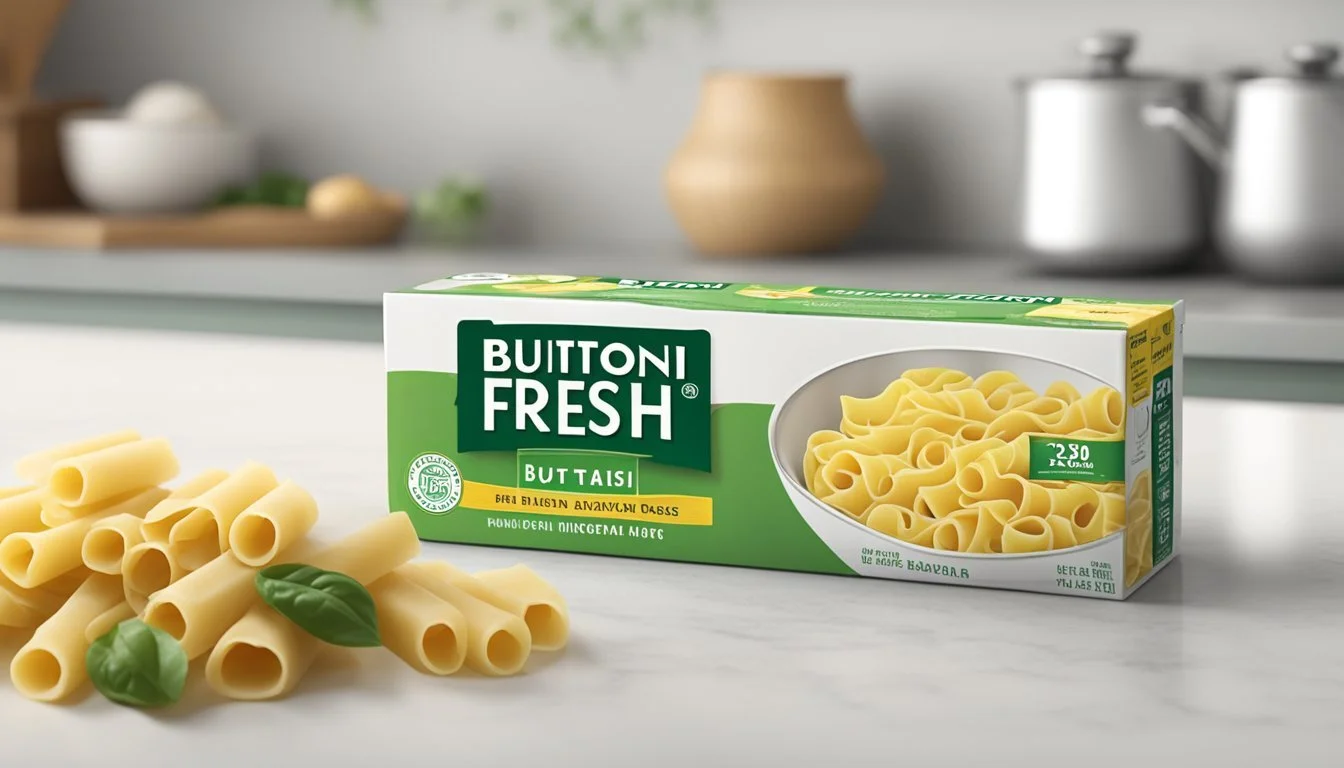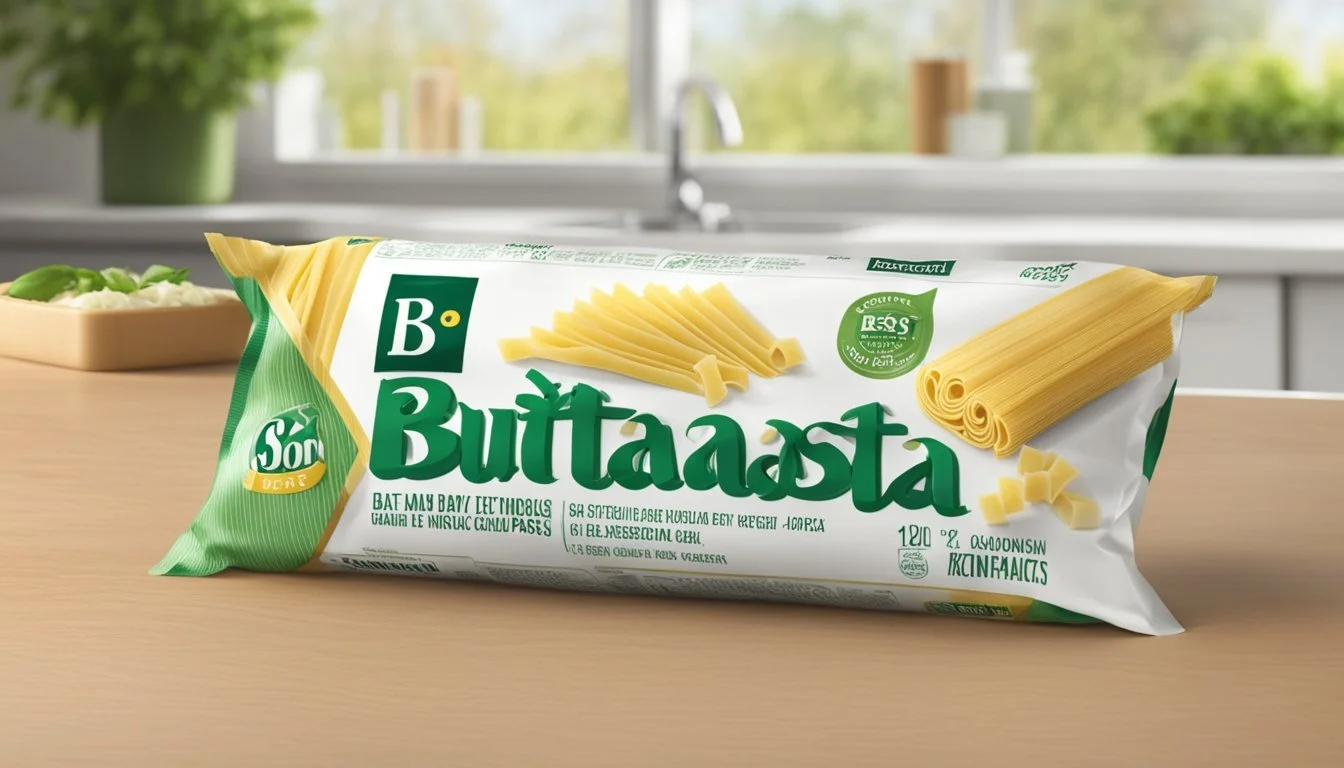How Long Does Buitoni Fresh Pasta Last?
Shelf Life and Storage Tips
Fresh pasta (What wine goes well with pasta?), unlike its dried counterpart, has a much shorter shelf life, which is why understanding its longevity is crucial for consumers who value both culinary quality and food safety. Buitoni, a known brand in the realm of pasta, offers products that cater to those seeking the authentic taste and texture that only fresh pasta can provide. Typically found in refrigerated sections of grocery stores, Buitoni’s fresh pasta is a convenient option for a quick, yet satisfying meal.
The shelf life of Buitoni fresh pasta is influenced both by the type of pasta and the specifics of storage conditions. When stored correctly in the refrigerator, Buitoni fresh pasta generally has a refrigerated shelf life of up to several days. To maximize freshness, it should be kept in its original packaging until ready to use, and any leftovers should be consumed within a short time frame to ensure both taste and safety are not compromised.
For those looking to extend the shelf life of their fresh pasta beyond the typical refrigerator timeline, freezing presents a viable option. When frozen properly, fresh pasta can maintain its quality for future use. This is particularly important for consumers who value not only the convenience of preparing food ahead but also minimizing waste by preserving the pasta's integrity over an extended period.
Understanding Fresh Pasta
Fresh pasta, a perishable food, represents a gourmet choice for many food enthusiasts. Its quality and shelf life are influenced by various factors, such as ingredients and storage conditions.
Ingredients and Freshness
Ingredients are pivotal in determining the freshness of pasta. Fresh pasta typically includes eggs, flour, and water. Homemade pasta often has no preservatives, which means it depends heavily on the freshness of its ingredients, especially the eggs and flour.
Types of Fresh Pasta
There are abundant types of fresh pasta, such as fettuccine, ravioli, and lasagna. Each type presents unique shapes and textures which may affect their drying times and the way they retain moisture.
Shelf Life of Fresh Pasta
The shelf life of fresh pasta is considerably shorter than that of dry pasta. Unopened store-bought fresh pasta like Buitoni generally lasts for 1-2 weeks in the refrigerator, after which its quality diminishes. The expiration date will be marked as a "best by" date on the packaging.
Factors Affecting Pasta Quality
Storage conditions such as moisture, humidity, temperature, and air exposure can all negatively impact pasta's quality. Fresh pasta must be kept in a controlled environment free from excess moisture to maintain its ideal texture and flavor.
Differences from Dry Pasta
Unlike fresh pasta, which is soft and malleable, dry pasta is dehydrated and has a longer shelf life, as it is shelf-stable. Dried pasta, made from wheat and water without eggs, can last much longer, often several years, as it is less susceptible to spoilage due to the lack of moisture.
Storing Fresh Pasta
Proper storage of fresh pasta is crucial to maintain its quality and extend its shelf life. Fresh pasta, being more perishable than dried pasta due to its moisture content, requires special conditions to prevent spoilage. Below, various methods and considerations for storing fresh Buitoni pasta are detailed.
Refrigeration Method
Fresh Buitoni pasta should be stored in the refrigerator immediately if not cooked right away. Refrigeration slows down the growth of mold and germs such as salmonella, extending the pasta's shelf life. Typically, fresh pasta can last in the fridge for up to two to four days.
Airtight Containers
When refrigerating fresh pasta, it is important to place it in airtight containers. Airtight storage minimizes the pasta's exposure to moisture and other contaminants. Pasta should be well-covered or sealed to maintain its quality.
Freezing Fresh Pasta
For a longer storage option, fresh Buitoni pasta can be frozen. To freeze fresh pasta, one should lay it out until semi-dry and then transfer it to an airtight container or a freezer-safe bag, removing as much air as possible. In the freezer, fresh pasta can last for up to two months.
Preventing Spoilage
To prevent spoilage, one must carefully monitor storage conditions and use the pasta within the recommended time frame. Pasta should be kept away from raw foods and any sources of cross-contamination in the fridge or freezer.
Use of Oils in Storage
Lightly tossing fresh pasta with a small amount of olive oil or another cooking oil can prevent sticking, especially when one plans to freeze the pasta. However, this method should be used sparingly as too much oil can alter the pasta's texture.
Preparing and Using Fresh Pasta
When preparing Buitoni fresh pasta, understanding the proper cooking methods, handling of leftovers, reheating techniques, and sauce pairings is essential to maintain the pasta's delicate texture and flavor.
Cooking Fresh Pasta
To cook Buitoni fresh pasta, one should bring a large pot of salted water to a boil. The pasta typically cooks much quicker than its dry counterparts, often ready in just a few minutes. Once the pasta floats to the surface of the boiling water, it's a good indicator that it is al dente and ready to be drained.
Handling Leftovers
If there are leftovers, it's important to store the cooked pasta properly. After cooling, tossing the pasta with a small amount of olive oil can prevent sticking. Leftovers should be placed in an airtight container and can be stored in the refrigerator for up to 3 days.
Reheating Techniques
To reheat leftover Buitoni fresh pasta, one can either steam it over boiling water, immerse briefly in boiling water, or for convenience, use the microwave. If microwaving, covering the pasta with a damp paper towel can help retain moisture and prevent it from drying out. Always ensure the pasta is heated thoroughly to an internal temperature of at least 165°F to ensure food safety.
Sauces and Fresh Pasta Pairing
The choice of sauce greatly impacts the overall flavor of a pasta dish. Buitoni fresh pasta pairs well with a variety of sauces, from rich and creamy to light and aromatic. Given the delicate nature of fresh pasta, lighter oil or cream-based sauces are often recommended to complement rather than overpower the pasta.
Tomato-based sauces: (What wine goes well with tomato-based sauces?) A classic choice that adds a bright acidity, enhancing the pasta's fresh taste.
Pesto: Its herbal notes and nutty flavors marry well with the tender pasta.
Alfredo: A smooth, creamy sauce that clings to the pasta for a rich flavor experience.
Aglio e olio: Simple yet flavorful, combining olive oil, garlic, and sometimes a bit of heat from chili flakes.
For optimal results, the sauce should be heated before mixing with the pasta. It's also beneficial to reserve a bit of pasta water to help the sauce adhere better to the pasta.
Safety and Consumption
When it comes to Buitoni fresh pasta, safety and consumption guidelines are crucial for ensuring that the product is enjoyed at its best quality and without health risks. Fresh pasta is a perishable food item, making proper storage and timely consumption important to prevent spoilage and food-borne illnesses.
Identifying Spoiled Pasta
Spoiled fresh pasta can pose significant health risks. Signs of spoilage include:
Discoloration: The pasta should have a uniform color. If spots or discoloration are present, it could indicate mold.
Odor: A sour or off smell is a strong indication the pasta is no longer safe to eat.
Texture: Slimy or unusually sticky pasta after cooking is a sign of bacterial growth.
Food Poisoning Concerns
Fresh pasta that has spoiled can harbor harmful germs, including salmonella and other bacteria. Symptoms of food poisoning can include nausea, vomiting, and diarrhea. To mitigate these risks:
Always store Buitoni fresh pasta in the refrigerator and consume it by the best by date.
Cook pasta thoroughly to an internal temperature that kills harmful bacteria.
Expiration and Consumption
Buitoni fresh pasta typically comes with a "best by" date, which is important for maintaining food quality and safety. One should:
Consume fresh pasta before this date to ensure peak quality.
If the expiration date has passed, it's advisable to err on the side of caution and discard the product to avoid the potential for food poisoning.
FAQs
When exploring the topic of Buitoni fresh pasta's longevity, one must consider key factors such as shelf life, refrigeration, freezing techniques, and overall storage conditions to ensure flavor, food safety, and quality.
Common Questions about Fresh Pasta
How long can I keep Buitoni fresh pasta in the fridge?
Buitoni fresh pasta should be stored in the refrigerator and typically has a shelf life of 1 to 2 weeks when unopened and kept under proper refrigeration conditions. Check the package for a "sell-by" date for the best flavor and food safety guidelines.
Can Buitoni fresh pasta be frozen?
Yes, freezing Buitoni fresh pasta is possible. To maintain quality, place the fresh pasta in covered airtight containers or heavy-duty freezer bags. Freezing can extend the pasta's shelf life for several months, allowing one to enjoy the pasta at a later date without a significant loss in flavor or texture.
What are the best storage conditions for fresh pasta?
For optimal longevity and quality, store Buitoni fresh pasta in a cool, dry area away from direct heat or sunlight. When refrigerated, ensure that the package is sealed properly to prevent exposure to air and moisture, which can shorten the pasta's life and affect its taste.
Are there food safety concerns with pasta past its expiration date?
While pasta doesn't instantly spoil past its expiration date, its quality, especially for fresh products like Buitoni fresh pasta, may degrade. One should inspect the pasta for any signs of spoilage—such as a sour smell, discoloration, or mold—before consumption for assured food safety.
Conclusion
Fresh pasta, as a product with a relatively short shelf life, requires careful storage to maintain its quality and flavor. Buitoni fresh pasta, when stored properly, can stay fresh in the refrigerator for approximately 2 to 3 days after the "sell by" date indicated on the package. It is important for consumers to adhere to these guidelines to ensure the pasta retains its intended taste and texture.
Storage Tips:
Keep the pasta in its original packaging until ready to use.
Refrigerate promptly at a consistent temperature.
For extended shelf life, freezing is an option; fresh pasta can last for up to 2 months in the freezer when stored in airtight containers or heavy-duty freezer bags.
While the freshness of pasta is paramount to its quality, the flavor can also be affected by how the pasta is stored. The refrigerator serves to slow down deterioration, while the freezer extends freshness even further; however, one must remember to thaw the pasta correctly to ensure optimal quality when cooked.
Finally, it is crucial to monitor the freshness of the pasta before cooking. If the pasta exhibits any signs of spoilage, such as off odor, discoloration, or a slimy texture, it should be discarded to avoid any food safety issues. Consumers should trust their senses and prioritize safety when it comes to consuming any fresh product, including pasta.






